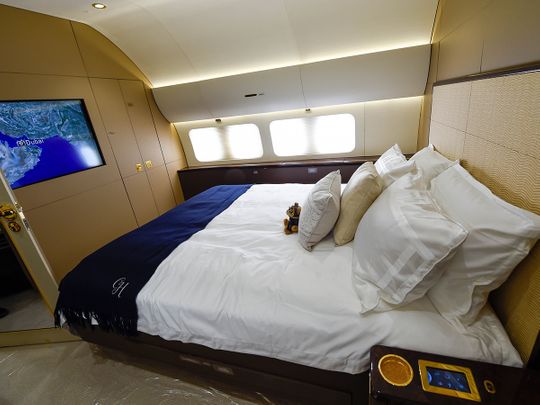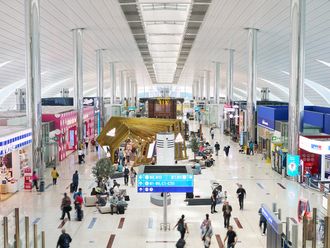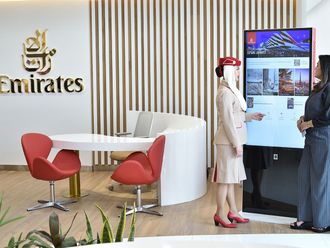
Have travellers in the region become hooked to flying private? After a disastrous 2020-21, fueled by pandemic-triggered restrictions, the commercial aviation sector is finally posting signs of healthy recovery, according to the International Air Transport Association’s (IATA) recent monthly update. Most Middle East carriers have even resumed their operations to pre-pandemic levels.
However, despite supply chain and workforce challenges, the private jet aviation business, which picked up mainstream popularity mid-pandemic, continues to thrive.
And this may be because travellers who developed a taste for flying private don’t want to return to flying commercial, according to manufacturers and operators participating in the Middle East and North Africa Business Aviation Association show, the region’s leading private business aviation event. Apart from health and safety reasons, mega events such as the Dubai Expo 2020 and the FIFA World Cup in Doha bolstered the demand for private aviation in recent times.
But, when it comes to the carbon footprint of travel, private jets are five to 14 times more polluting than commercial planes per passenger and 50 times more than high-speed rail, emitting two tonnes of CO2 in a single hour.
However, manufacturers have said they are increasingly committed to using and investing in sustainable aviation fuel (SAF) to offset their emissions, allowing them to achieve carbon neutrality by 2025.
‘Can’t go back to flying commercial’
Carlos Brana, Senior Executive Vice President - Civil Aircraft at French manufacturer Dassault Aviation, told Gulf News: “For many businessmen, time is money.” Brana explained, “Once people experience the comforts of flying private, it is tough to return to flying commercial. The services are tailored to the needs of the passenger.”
He added: “You can complete long-duration flights in a short time. For example, private flying allows you to complete that journey in two days if you want to travel from Dubai – Jeddah - Qatar. That is not possible with commercials.”
The company exhibited its popular Falcon 8X at MEBAA. Large cabin Falcons like the 6,450 nm/11,945 km Falcon 8X make up a third of the 75 Falcons operating in the region. Brana explained how the company offsets its emissions: “We blend 30 per cent of SAF in all our flights. While we can electrify some systems, the engines still need traditional aircraft fuel.”
Boeing, the world’s biggest private jet manufacturer, said at least 820 Boeing Business Jets (BBJ) are in the Middle East and Africa (MEA). Since its launch in 1996, BBJ has delivered 240 jets on 262 orders.
BBJ Marketing Director Alex Fecteau said: “A lot of people did move from First and Business class in commercial to private post-pandemic. Once you experience a BBJ, you go through a private airport and enjoy a five-star experience, and it is hard to go back.” Fecteau said in this region, travellers prefer large aircraft since they travel in large groups.”
What’s causing this shift?
With about 4,000 millionaires moving to Dubai yearly, demand and opportunities for business aircraft continue to grow. Two mega events – Dubai Expo 2022 and the FIFA World Cup in Doha – bolstered the demand for private flying in the region. Paul James, the Director of Sales and Aircraft Management at DC Aviation, said: “There’s also the option for shared charters. So, for events like the FIFA World Cup, we have seen a group of friends, for example, charter a flight to go check out the games.”
Rajgopal Nair, Director of Bluedot Charters and Air Ambulance Service Company, said: “We have witnessed exponential increase post-pandemic where the demand for private charter travel has increased to 200 per cent in 2022 alone. While some of it is FIFA driven, many premium and corporate travellers prefer this mode of travel for privacy, convenience and health safety point of view.”
Nair said: “Currently, at two flights daily, double what was witnessed pre-FIFA, with the increased demand, we have had to add aircraft to our fleet to meet holiday season and FIFA-led travel demands.”







